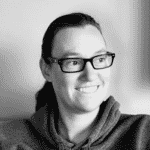Product Management Webinar: Product Positioning
The Secret to Product Positioning with April Dunford
How do you determine your product’s unique value? What do businesses often get wrong, when it comes to positioning? What’s the secret to positioning your product like a pro?
Having strong product positioning is an unbeatable advantage in your product’s success, but it’s also something people often get wrong.
This webinar with guest, April Dunford, Positioning Consultant and Author of ‘Obviously Awesome’ and host Janna Bastow, CEO of ProdPad and inventor of the Now/Next/Later roadmap will uncover the secret to successful product positioning.

About April Dunford
April spent the first 25 years of her career as a startup executive, running marketing, product, and sales teams. She led teams at seven successful B2B technology startups. Most of those startups were acquired (DataMirror to IBM, Janna Systems to Siebel Systems, then SAP, Watcom to Sybase via Powersoft, to name a few), and she ran big teams at IBM, Siebel, Sybase, and others. The total of those acquisitions is more than two billion dollars. Across that journey, she positioned, re-positioned, and launched 16 products.
She has a deep curiosity about what makes the difference between a winning product and a loser. Developing a systematic way of positioning technology products and companies has become her life’s work. As a consultant, she has had the privilege of working with more than 100 companies, allowing her to go even deeper and broaden her positioning expertise. The bulk of her work is with early and growth-stage startups. Companies where the stakes are high – and weak positioning can mean the difference between success or failure. She also works with large global companies, helping them develop deeper positioning expertise in their product and marketing teams.
Key Takeaways
- Our top tips to position your product successfully
- How to choose the best market for your product?
- How to determine your product’s unique value and maximize it
- The common pitfalls to avoid when positioning your product
- What companies often get wrong when it comes to product positioning
- And so much more!

[00:00:00] Janna: Welcome, everybody. This is a series of webinars that we run. It’s called the Product Expert Series because we tend to get on a different product expert each month. Each once we do this. All the past talks have been recorded. And there’s a mixture of presentations that have been done, as well as firesides, which is what today is gonna be. Just a chat between myself and April. And it’s always with a focus on insights, the focus on content, experiences, learning, and sharing. So today is gonna be recorded and shared with you. So feel free to jump in and ask questions and know that you’re gonna get a copy of this later that you could share around with your colleagues.
Now I am gonna do a proper intro to April in just a moment, but I wanted to just jump in with a quick introduction of ProdPad. ProdPad is a tool that we built ourselves when we were product managers, myself, and my co-founder, Simon. We needed something to help us keep track of experiments and feedback and all the stuff in our backlog. And so, we- we ended up building it ourselves. And so ProdPad gives you control, organization, and transparency, and it helps you create the single source of truth for all your product decisions. We started sharing it way back when, and now it’s used by thousands of teams around the world. So you can try it for free. There’s a free trial. We also have a sandbox environment that has preloaded data like Lean roadmaps and OKRs and ideas and experiments. You can see how it all fits together in a product management space. And our team is made up of product people. So give it a try, let us know what you think. We’d love to get your feedback on it. And on that note, I want to introduce you to April Dunford.
Now I’ve been a big fan of April for years. She’s been putting stuff out there for a long time now about the- the subject of product positioning and obviously awesome. Yeah, this is what the book I’ve got here. It’s one of the few that makes it into my regular rotation on my desk as a reference tool. A super useful book to have on hand. Especially if you’re playing with coffee and trying to figure out the right positioning for your company. So this is why I was so excited to have April join today’s webinar. So April has spent 25 years as a startup executive running marketing, product, and sales teams. She’s led teams at seven successful tech startups, most of which were acquired by big companies like IBM and SAP, where you went on to go lead those teams, right? And you’ve launched a whole bunch of products, and you’ve got this deep curiosity about what makes a winning product. I really like that phrase that you talked about there.
[00:02:26] April: Yeah.
[00:02:26] Janna: So you now work as a consultant you help customers develop their positioning, and you work with a mixture of companies early in growth stage companies, but also large global companies?
[00:02:37] April: Yep.
[00:02:38] Janna: Excellent. April, welcome. Thank you so much for joining us here today.
[00:02:41] April: Hey thanks so much for having me. This is great.
[00:02:43] Janna: Yeah. Everyone says hi in the chat to April [laughs]. All right. I’d like to start off by just understanding a little bit about where this book came from. So the book obviously awesome. You know, what inspired you to write it?
[00:02:57] April: Yeah. It’s a bit of a long story, but I’ll give you the short version. So positioning’s been a thing that I’ve been having deep thoughts about since early in my career. So the first ever job I had straight out of university was a product marketing role at a company, and I got assigned to a product that was essentially dying and we, instead of just killing it, we did a shift in the positioning and we were ultimately really successful. And the product took off, we got acquired. I ended up at a big company. And at the big company I inherited a handful of products, and- and some of those looked like they had bad positioning too. And I thought, Okay we should reposition those too. But maybe we’ll do it properly this time, because the way we did it at the first company I was at, we just threw stuff at the wall to see what stuck.
I embarked on this journey of you know, this seems like a really fundamental marketing thing that we do, positioning. There must be a methodology for doing it. So how do we do it? And so I spent a long time talking to smart marketers, and I went back and did a bunch of courses, read a bunch of books. And what I discovered is that, although we have a very mature set of ideas around what positioning is and why it’s important, at the time there was no methodology for actually doing it. And so I thought that was nuts. And- and I spent maybe the next 10 years of my career trying to figure out could we get to a repeatable methodology where you could come in as the person in charge of a product and do a repositioning and have it be a thing that, you know, step 1, 2, 3, 4, 5, we know how to do this. And so eventually I did get to something that I felt work, that I used it at a set of companies where I was in there as a Vice President of marketing, or sometimes I had products, sometimes I had sales. And so I got to the point where I could teach people how to do it.
So I was doing a class on it. I was teaching a course at some startup incubators, and eventually, I decided I should just write this all down. And so it started out as a blog post, but then it got longer and longer. And so eventually I was like, Oh, this is gonna need the full book treatment and here we are [laughs].
[00:05:11] Janna: Brilliant. Thank you so much for writing it down. As I said, it’s a, it’s such a useful reference, such a useful tool to have. Now, what exactly do you mean by positioning?
[00:05:20] April: Yeah.
[00:05:20] Janna: I mean it’s not just moving around some words on the homepage, right?
[00:05:24] April: Oh my gosh. This is- this is the worst part about positioning. You say Okay, we’re gonna work on positioning. And people are like what exactly do you mean? Or worse, they’ll say, Oh yeah, I know what positioning is. It’s like messaging. Actually no. Messaging is a thing we do with positioning once we have it. But if I were to say to you all, we’re gonna- we’re gonna mess with , April, you’re the brand new VP of Marketing. Go fix the copy on the home page, and I say, Okay, there’s a bunch of things I need to know in order to do that. What is the value that we can deliver that no one else can? Who exactly is the best-fit customer? What do they look like? How are we different and better than our competitors? So this is what we’re trying to get at in positioning, and messaging is an output of that. Some people will talk about brand positioning and that really bugs me because I feel like there’s branding and positioning, but those two things are actually totally separate.
And again, it’s really hard for me to do branding if I don’t have positioning as an input. I kinda see positioning as this fundamental sort of underlying thing. There’s an input to almost everything we do in marketing and sales. So I have a really clunky definition of it. So, positioning defines how our product is the best in the world at delivering some value that a well-defined set of customers cares a lot about. So that’s kinda how I define it.
[00:06:42] Janna: That’s a really clear definition. I like that. And so you talk about the positioning being something that needs to be done in order for marketing and sales to do their messaging.
Is positioning owned by the product or is it owned somewhere else in the business? Where does that sit?
[00:06:56] April: Yeah, this was one of the fundamental things that I struggled with a lot in the early part of my career when we were doing positioning work, is my initial idea was this a marketing thing, and even more specifically, a product marketing thing. If I think about what is the- what is the biggest deal thing that product marketing does, I think the biggest deal thing they do is they, you know, they’re very concerned about the positioning of the product. But here’s the thing. In my work trying to figure out how to actually do positioning, one of the things that became clear to me was that, you know, what you end up doing with positioning once you have it spans the whole organization. So, product needs to understand it for the work that they’re doing, as particularly when they’re thinking about the longer term strategy and the road map and prioritization and stuff. Sales obviously needs to understand the positioning because they’re out on the front lines of actually pitching this stuff and selling it to people. Marketing needs to understand it. There’s other parts of the organization that are often involved in selling things. Customer success is often involved in selling things now.
You’ve got the founder, the CEO running around, and in sales meetings and doing other things. And so, my problem was that, if we developed positioning in the marketing department, then the problem was getting everybody else to buy into it, was problem number one.
[00:08:20] Jenna: Yeah.
[00:08:20] April: Problem number two was, we often didn’t have the insight we needed to actually do positioning properly. So in- in particular that we would have to spend a lot of time trying to figure out what was going on over in sales. And it would be, it was very easy to solve that problem by just involving sales in doing the positioning. So eventually where I landed was product marketing, I think, is the right place to initiate a positioning exercise. But if we’re actually gonna do positioning, it needs to be a cross functional effort. I need product, I need marketing, I need sales. I need certain people on the executive team, customer success together in a room. And if we can work through the positioning together, one, the inputs will be better because we’ll- we’ll get the advantage of all this information from people that see customers at different parts of the journey. And then the second thing is, everybody will deeply understand where we got to, so that they can then go back, take that positioning to their teams and execute it everywhere.
And then product marketing then becomes what I would consider to be the stewards of the positioning. Once we’ve got it I see one of the main things product marketing does is, they’re in charge of writing it down and being like the positioning police a little bit. You know, why are we saying this thing? That doesn’t line up with our positioning. Why is this like this? That’s not actually what we do, and what our differentiated value is. And so, and then they would also be the role and the company that puts their hand up and says, You know what? Some stuff is happening out in the market. And I think we need to get the gang together again to re-look at the positioning ’cause maybe it needs to be changed.
[00:10:02] Janna: Yeah.
[00:10:02] April: So that’s kind how I look at it.
[00:10:03] Janna: All right. Yeah, that makes a lot of sense. And so when should companies start working on their positioning? I mean you work with companies of all different shapes and sizes.
[00:10:12] April: Yeah.
[00:10:13] Janna: And when do companies start, typically start, that you see.
[00:10:16] April: Yeah. So, I got some opinions about this.
[00:10:19] Janna: [laughs]. We love opinions here.
[00:10:21] April: So one is the, often what I’ll get is these… You know, I deal a lot with startups.
[00:10:25] Janna: Yeah.
[00:10:25] April: So I get these founders call me and they got an idea, they got a product, it’s not out in the market yet. And they’ll be like, You know, I got to make sure that the positioning is perfect when I launch, you know? So, we gotta really get this thing nailed and then we’re going to launch it. Here, but here’s the reality of that. That is literally impossible.
It’s impossible for a lot of reasons. So the best I think we can do before the product hits market is, we develop what I would call a positioning thesis. And so the thesis says, Look, here’s who I think we compete with. Here’s the capabilities I’ve got that makes my product different. Therefore, this is the value I can deliver that nobody else in the market can. And here are the people that I think are really gonna love that. That my thesis. Now, in my experience, you launched the product and you’re wrong.
[00:11:17] Janna: [laughs].
[00:11:17] April: Sometimes you’re really wrong, and sometimes you’re just a little bit wrong, but you’re wrong. Trust me, there’s some baked in there. There’s assumptions baked in there. And you can do as much customer discovery as you want, increases your chances of being right, but we’re never right about everything.
[00:11:33] Janna: But that’s comforting to hear, actually.
[00:11:35] April: It is. And it’s true. I’m, like, I’ve done a lot of product launches. 16 back when I was VP Marketing, 16 project lau-, product launches, not once did we get it right. And sometimes we had done an amazing job of, in my opinion, of doing customer discovery. We were so wrong. [laughs] it was so wrong. Because I’d just be stuff. And you’d be like who thought that? Who thought that? Those people were going to love our thing. Like, where did they come from? So, you know, and you just don’t know everything. So I think that… Then what happens is, you get this first wave of customers in. And that first wave of customers, you start to see some patterns in who loves our stuff and why. And that’s an excellent time to tighten up the positioning because now we’re starting to see it. We’re like, Ah, you know, these kinda customers love us, ’cause they really love this thing, and the value we can do with this thing. And so once we’ve got our first wave of customers in, then we can tighten it up and kinda run at that segment and say, Now we get it. This is our value, these are the people that love us. We can tighten that all up and just run at winning that market.
So, I think anybody that’s in the market, and you pass this first wave of customers, I think you can tackle the positioning. Before that, I think what you’ve got is a thesis, and you should assume the thesis is wrong. So people internally should know what the thesis is. I think it’s important to write it down. But when you go to launch it, I actually think the positioning should be loose.
And you’ll hate that [laughs]. Because it’ll feel terrible. It’ll be, your copy will be loose and shitty, your pitch will be loose and shitty. But here’s the thing. We kinda wanna put it out there with the knowledge that we’re wrong on something. We just don’t know what. And even though internally we know what we’re trying to test, like we know this is the thesis, we’re trying to see if the thesis is true, but we don’t wanna block off things where we don’t necessarily know. So we- we’d like to feel a little bit of market poll here. And let’s just put it out, see where the market pulls us. So, my example, and this is terrible analogy, but it’s only one I got is, this we woke up in the morning, we decided I’m gonna make a fisherman, I’m gonna make a fishing net.
And my thesis is, you said net for catching tuna. That’s what it is. And so, I could get really tight on the positioning and say, Hey, this is tuna fishing net. Tuna fishermen, try it out. And maybe it works for tuna and maybe it doesn’t. Or I could say internally thesis is a tuna fish net, but externally my marketing is like, Hey, man. It’s a net for fish. All kinds of big fish. I don’t know. Try it out [laughs]. And I get all kinds of people using the tuna, using the net, and then let’s just see what we pull up. And maybe what happens in my experience is, five times out of 10 people are pulling up who knows what, like a grouper. And you’re like, Oh man, this is a grouper fishing net. We weren’t thinking about grouper. But it turns out it’s awesome for grouper, and the grouper fishermen love it. Now I know this and I can tighten it up and go win the grouper market,
[00:14:39] Janna: Yeah.
[00:14:39] April: And off I go.
[00:14:40] Janna: Yeah.
[00:14:40] April: I think in the beginning it’s okay to have it loose even though it’s gonna feel terrible. Your messaging’s gonna feel all squishy. But the reality is, you you don’t know enough to tighten it up, and you actually don’t wanna over tighten it until you know what’s going on.
[00:14:53] Janna: Yeah, now and I love the the fishing net analogy.
[00:14:56] April: [laughs].
[00:14:56] Janna: And maybe we can stick with the fishing net analogy just long enough to answer Carwin’s question, which was, can positioning come after product market fit?
[00:15:02] April: Here ‘s my thing with product market fit as a concept.
[00:15:07] Janna: [laughs].
[00:15:07] April: So I spent 25 years as Vice President Marketing. And so at some point, this- this product market fit thing , I’m super old, right? So, I remember a time before we had words like that, the product market fit, but then all of a sudden the VCs were talking about product, do you have product market fit? And I was like, What is that? And people were like, You’ll know it when you have it [laughs]. You know? And I’m like, What?
[00:15:30] Janna: [laughs].
[00:15:30] April: Is it love? [laughs].
[00:15:33] Janna: [laughs].
[00:15:33] April: What is it? And they were like you’ll know it when you have it. And I’m like okay. And then I was like how do we measure it? Then everybody had their opinion about how to measure it, the different ways to measuring and all this stuff. And so I was like, Man, I don’t get what this product market fit thing is, but I’m gonna know it when I have it. But what everyone did agree on was what we were gonna do once we had product market fit. ‘Cause what product market fit really is, and I can see why this is so appealing to venture capitalists, it’s the most, it’s the exact moment you should invest in a company.
Because it’s the moment when you know I got this product, and it is awesome for these people. And we know that. And so what we’re gonna do at that exact moment is, everyone’s gonna look at me, Vice President of marketing, and say, Smash your foot on the gas, pour oil on the fire, this is where we’re gonna- we’re gonna go heck. So what I as a marketer would say we have at that point, if that’s not product market, I don’t know what product market fit is. I still don’t know. But I do know that we cannot smash our foot on the gas until I really understand what’s my differentiated value, and who cares a lot about that value? Product market fit is the same idea. So, it’s not enough to just have the product market fit feeling, in my opinion.
What I have to have is what you call actionable segmentation, which says, This is the value that only I can deliver. These are the people that really care a lot about that. I know how to find these people. I can define them in a way that I can make a list, I could target them with my marketing. If I got that, then I can smash my foot on the gas. So if product market fit means I know what that is, the minute I have that, then we’re really ready to scale. Now, we may have, prior to that, enough experience to try to tighten up the positioning a little bit. But when we get to that moment where we’re like really sure about it this is our differentiated value. These are the people, that is an excellent time to get really tight on the positioning and then invest a lot of marketing, and sales just go, grow like crazy. So I don’t know.
[00:17:51] Janna: [laughs].
I love that answer. Thank you.
[00:17:53] April: Can positioning come after product market fit? Yes. And similarly to, this concept, the product market fit we can have it and we lose it. The same thing happens with positioning, right? I have this value that a certain type of customer really cares a lot about. And we could be going along and everything’s good. And then what happens? Sometimes a competitor catches up with us.
And a competitor comes up and- and all of a sudden our thing that was really differentiating isn’t anymore, ’cause they do it too. And so now our positioning’s got to be different because our whole reason, why pick us over the other guys, is now different. ‘Cause the other guys do the same thing we do. So, we’re gonna have to go back and rework the positioning and figure out what that differentiation is.
[00:18:34] Janna: Yeah. And actually you touched on something just a moment ago, which was around customer segmentation.
Kathy asked the question what is the role of customer segmentation in positioning.
[00:18:43] April: It’s super important.
[00:18:45] Janna: Yeah.
[00:18:45] April: Yeah. It’s super important and I think we don’t think enough about it, right? So, my background is all in B2B. And in B2B, we can’t do good marketing without really solid customer segmentation. So when I say here’s the value my product can provide it baked into that concept of value is for who. Who cares about that? So what kind of a company actually really cares about that value? So I think there’s two critical pieces to great positioning. It’s, I really understand the value that we can deliver that no one else can, no other product on the market can. But I also really understand who cares a lot and why. So what are the characteristics of a target account that make them really care a lot about this value that only we can deliver? If we got that, then we got really solid positioning. We can go run at that all day ’cause we know we’re gonna win with these people. We don’t win with everybody, but we win with these people ’cause they care a lot about the thing only we could do.
[00:19:41] Janna: Yeah, that’s perfect. And how do you know that somebody actually cares about what you do? Is it in how they buy stuff off you? Is it NPS? Is it some other metrics that you use?
[00:19:51] April: Yeah. First of all, we win deals [laughs].
[00:19:55] Janna: [laughs]. It’s raining money, so it’s obviously working for those people. Yes.
[00:20:02] April: There’s that [laughs].
[00:20:02] Janna: [laughs].
[00:20:02] April: So it’s funny, when I do positioning work with clients we will often start when we’re having this conversation, we’ll be like we’ll start with who do we compete with? And so, we can- we can have the list of, here’s who we compete with. And typically we got two kinds of competitors. We got status quo competitor which is maybe a spreadsheet and manual processes. But then usually in B2B we got some other short list competitors too. So the other ones that look kinda like us. That land on the shortlist. So we’re like, Okay, this is what we gotta beat in order to win a deal, right? And then we say, Okay what do we got that they don’t have? Just capability wise, feature function wise. Here’s all the stuff we have. And then we’ll map it to value. And this idea of value is what, you know, is, you know, stuff that a customer cares about.
So if I say I got a feature that does this. It’s, the answer to the question was, So what, for that feature? Like, why does the customer care about that feature? You say this is the value it can deliver for your business. And then we got the value. And then we’re like, Okay, so who cares a lot about that value? And so we can logic this out if we understand our buyers, right? Where we can say they care a lot about this, they don’t care a lot about that. So then we can look at it and say who cares a lot about this value? What is it about their business?
Maybe they care a lot if they got a certain kind of business model, maybe they care a lot if they have more than five sales people, they care more. If they have less than five sales people, they don’t see this problem, right? Or if they have these three other pieces of software, now they have this problem and other people don’t. And so, the more granular we can get on that, the more we can really understand what this value is. But, I lost my train of thought there. I was just moving [laughs].
[00:21:42] Janna: No, that makes a lot of sense. And like, how do you know that you’re actually building for a market that’s big enough?
[00:21:47] April: Oh, that’s big enough? So good. Yeah. Then we have this issue that we’re like, Okay, so we’re asking ourselves this question what are the characteristics of a target account that make them a good fit for this stuff? So, they can list those characteristics. Then then the question is can I make my sales numbers sell and adjust those people? And sometimes this is a bit of an oh shit moment [laughs]. Where you go actually no [laughs]. There’s only 40 companies on the planet that meet this criteria. And so, what you’ve got is this product that fundamentally doesn’t deliver differentiated value for a big enough market. And you’re gonna have to go build something.
[00:22:25] Janna: Yeah.
[00:22:25] April: So sometimes we get that where product’s doing fine and we’re selling good, then all of a sudden the competition catches up to us, we do this thing who cares… Our differentiated values suddenly become very thin, and there just aren’t enough people that care about that little slice of a thing you do differently, now we’re in trouble.
[00:22:42] Janna: Yeah.
[00:22:42] April: So that means it then now we gotta go fix product ’cause, you know, marketing can’t make this stuff up. It’s there or it isn’t.
But a lot of the times a lot of the time we have it, and the worry is the company is worried about focusing in too small. But even when we get it as tight as we possibly can, there’s still way big enough market to go chase just that. So usually what we’ve got is the opposite problem. Everyone’s too scared to focus in on the bit where we really win. And instead, it feels nicer to focus it on this bigger market. But what it actually means is, you know, your win rate is super low. You- you spend all kinds of money and resources chasing deals you’re never gonna win ’cause you don’t actually have value that works for these people.
[00:23:29] Janna: Yeah.
[00:23:30] April: So most of the time we’re trying to squeeze it in [laughs].
[00:23:33] Janna: Yeah, you’re really focusing in on that point. So you go deeper into that market, you get so much more of that market penetration. And yeah, there might- there might be other people outside of that who end up buying your product because you’ve now got this, you know, group of people who use it and go, Oh maybe not made for me, I could definitely catch a grouper with this if I needed to.
[00:23:51] April: That’s exactly it. The- the reason we’re trying to get to this tight definition is we’re saying, this is where we’re going to spend our marketing and sales efforts. That doesn’t mean if somebody outside of that puts up their hand and says please take my money, we take their money [laughs].
[00:24:04] Janna: Yeah. Yeah [laughs].
[00:24:06] April: But what we try not to do is chase all kinds of deals where our competitors have an advantage. And, we might spend three months with the customer and then they say, Yeah, no, we picked the other guy. And we could have predicted that. So what we actually wanna do is have our marketing and sales efforts focused on the ones where we got it on fair advantage. We should be able to win this deal. And then everybody’s gonna feel better. We’re gonna spend most of our time with the deals that we should be winning.
[00:24:32] Janna: Yeah, that makes a lot of sense. And so what do you do about like multifaceted products platform products that have different areas that solve different problems?
[00:24:40] April: We have this a lot, right? So it’s interesting, like, when it comes to positioning… Also what we have is family problem, right? So we got the company, and the company has a position. But underneath the company there’s three, let’s say we got product families, and then underneath that there’s individual products and then there’s individual things. And so if we think about the positioning is the answer to the question. Like, why pick us over the alternatives? You end up having positioning at each level of this. So, an example is when I worked at IBM, we had the company positioning. And the company positioning was kinda the answer to, like, why do business with IBM? And we had a story around that. We always… In fact we started every pitch like, why would you do business with IBM? Well, At IBM, we’re the only company… This is different now.
[00:25:28] Janna: Yeah.
[00:25:28] April: But at the time, we’re the only company that has hardware, software and services. We’re the only one that can bring that together. And here’s the magic that happens when these three things come together. It’s magic. And then- and then underneath there, my product was in the software group. So then we had this software group positioning where we’re like, why would you buy software from IBM? Not hardware, not services, software from IBM? And so, we had this story about how we had a specialization around middleware. And this is what’s… This is the great thing that happens when all your middleware plays nice together. And we had two or three pillars, like openness was one of it. And this is why you wanna have openness in your middleware, blah, blah, blah. And then underneath that, my product was in the database division. So then we had this little speech, like, why would you want to buy a database from IBM? Which is a legitimate question [laughs].
[00:26:17] Janna: [laughs] I do believe that saying, no one ever got fired for buying blue, right?
[00:26:23] April: Yeah [laughs].
[00:26:23] Janna: Like, IBM just has a, kind of huge reputation, right?
[00:26:24] April: Yeah. And so, then it was like, why you wanna buy a database from IBM? And then we had this whole speech about that. We actually invented the relational database, hold more patents than anybody else on SQL, blah, blah, blah. And then I had my little thing underneath that which was this information integration product that was the thing I was actually tryna sell you. But the whole idea was that there was value at each level of this and part of the reason why you want to buy my little thing is because it fit into that story of software and IBM and the whole thing. And so typically we’ve got this kind of cascading thing.
So, when we have things like a platform, for example, and in the platform we’ve got bits and pieces, and maybe you sell those things separately and maybe you don’t, but usually what you’ve got is, you know, there’s the platform story that says, here’s why you wanna buy the whole thing, and here’s why this makes sense for this to be all together in a thing. And with, and you’ve got some value with shared metadata and who knows what. This is why it’s nice, when it all plays nice together, it all comes together. But you might, from a packaging and pricing perspective say, but look, if you don’t wanna buy all this stuff from us, that’s fine. You drop this bit out, you don’t have to bid, you have to buy that bit, but I’m still gonna give you the whole speech on it. And then if the customer says you know, I just need this one bit.
Then you go, Oh, that’s fine. I’m just letting you know what you could do if you went with us and bought all this stuff from us. But sure, let’s just talk about this thing. And then we can talk about that thing. The alternate to this is, sometimes you’ve got a situation like and Salesforce used to be my big example of this, although things are changing over there, but sometimes what you’ve got is, you’ve got a thing that is actually your lead product. And it’s your lead product because you win all day on that thing, and no one can touch you. And then you got all these other things. They’re pretty good [laughs].
[00:28:23] Janna: [laughs].
[00:28:23] April: But on their own, maybe they don’t win, but they sure as heck win once you got the lead thing. And so, then you’ll have this thing, like Salesforce was like this since the dawn of time. Where we sell you the CRM. If you don’t have any Salesforce stuff, they’re gonna sell you the CRM. They win all day on the CRM business. The sales cloud.
[00:28:41] Janna: Yeah.
[00:28:42] April: And then everything else is positioned as an add-on, ’cause do they have the world’s best marketing cloud? No [laughs].
[00:28:49] Jenna: [laughs].
[00:28:50] April: But they do if what you really care about is your marketing cloud working really nice with your sales cloud and these things coming from the same vendor, blah blah blah. So they’d win all day if you got this already. So for the longest time Salesforce had this great positioning. They had this tombstone strong lead product. They sell you that, everything else is positioned as an add-on. Even big stuff like, just an add on. We’re just gonna come in and sell you that thing. Now I don’t know what the hell’s going on over there [laughs].
[00:29:17] Janna: [laughs].
[00:29:17] April: Now you look at it and they got Slack, they got Tableau, they got MuleSoft. And these things are not really an add-on. In fact, you, a lot of companies would have that stuff already, maybe even have it before the C-, they have the CRM. And so now I’m in this situation. So they’re trying to position this all, the graphic is a circle, and they’re calling it Customer 360. And in my opinion, from a positioning standpoint, it’s a hot mess over there.
[00:29:46] Janna: Okay. All right. That’s really interesting. Yeah, I can picture that circle. I was looking at that recently and just trying to figure out what half of the things were.
[00:29:53] April: The circle is bad.
[00:29:54] Janna: [laughs].
[00:29:54] April: The circle is bad.
[00:29:55] Janna: Yeah. Yeah.
[00:29:56] April: Because when you put things on a circle like that, the implication is, they’re all the same.
And they are not, right? I got sales cloud, marketing cloud, service cloud, and then I got Tableau and it’s these are different. And then they’ve got Net Zero, which isn’t even a product [laughs].
[00:30:13] Janna: Yeah.
[00:30:13] April: Hanging out there. And then they got the Bunny. I’m like, What is this? It’s a hot mess.
[00:30:18] Janna: So, from what I understand, you’re a big fan of those those graphics, the things that show how you’re positioned.
[00:30:24] April: Yeah.
[00:30:24] Janna: I know you talked about how you positioned in a mole, for example. I’m killing the analogy.
[laughs] what makes a good one, and what makes a bad one?
[00:30:31] April: So I think it sometimes if we’ve got multiple products and we’re trying to show how things fit together, now it helps to draw a picture of it to get people’s heads around it. And so, I sold lots of things where we had kind of base plus add-ons. And so if we had base plus add-ons, you would show, this is the base. And here’s the add-on things. Look, no matter what you have there, this happened. So if I were to draw the picture for Salesforce, we’d looked forever. There’d be, you know, sales cloud-
[00:31:00] Janna: Salesforce.
[00:31:00] April: And then there’d be all these other things adding on. And, you know, and then if I tried to throw Slack or Tableau in the mix that might actually be another layer across those things, because those things cross marketing cloud and service cloud too, regardless of whether you have CRM. So, but I’ve seen companies do it in different ways. Sometimes where you have is it’s- it’s a circle, and it’s a bunch of things that all play nicely together. But you can replace bits and pieces of it, and there is no base thing, there is no first base thing. They’re all the same. And so depending on what you’re trying to do, you can do it that way.
We I’ve seen lots of ones for products I’ve worked at, where, you know, we’re trying to describe what’s us and how do we fit into your existing set of tools. And that’s often really clarifying where people are like, wait do you replace whatever? And then you can draw this picture that says, No, we play nice with all these things outside are not us. And all these things inside our us. So the example I like to use, a company I did a little bit of work with way back when called Postman. And so, they’re an an API development platform. And they would get all this confusion like, are you CICD tool? Are you the same as a gateway? We have a gateway. Where does that fit? And so they’ve got a bunch of nice graphics that show like, here’s all the things that are Postman and here’s all the things that we interact with that’s outside. And that just answers that question without having to say a thousand words.
[00:32:28] Janna: Yeah, makes a lot of sense. Love that. And so somebody actually asked the question around how do you see the role of pricing versus positioning?
[00:32:35] April: So I think pricing is actually really critical to positioning. We often assume things about a product at different price points. There’s different expectations that come with it. And my favorite example of this is years ago I was having a conversation with the folks at Shopify. And they were having this thing that bigger companies were trying to use Shopify for things that, Shopify is really oriented, the original Shopify has really oriented small businesses, but they, what they were seeing was that companies churning out because, and there were some requirements there that they couldn’t get you know, they wanted better support or maybe they wanted to actually have a sales person, whatever. But a lot of it was just conceptual. We don’t believe this thing that we pay 20 bucks a month for [laughs] can do the job of this other thing which costs hundreds of dollars a month. And so at the beginning when Shopify launched Shopify Plus, it was actually the exact same product at a different price point. It solved that issue.
[00:33:39] Janna: Interesting.
[00:33:39] April: Then they’re saying now it’s really different [laughs].
[00:33:42] Janna: Okay. [laughs].
[00:33:42] April: So, everything-
[00:33:43] Janna: I had in my mind, so I gotta go check out the pricing page, but it changes so quickly.
[00:33:45] April: Yeah. No now it’s really different.
[00:33:46] Janna: Yeah.
[00:33:47] April: But at the beginning it was, there was this objection, and the objection was around the expectations because of the price.
[00:33:53] Janna: Hmm.
[00:33:53] April: Is this just too cheap to do what we do, what we wanna do.
[00:33:56] Janna: It’s interesting.
[00:33:56] April: Even though we weren’t necessarily bumping into anything. So the beginning it was just like, we’re gonna put price on it. And then it was like, what would you… With that price, you’re gonna get support, you’re gonna, we’re gonna have a sales team, we’re gonna have an account manager, all this stuff. Now there’s a bunch of functionality that’s different as well.
[00:34:09] Janna: Yeah.
[00:34:09] April: But at the beginning a lot of it was around pricing.
[00:34:12] Janna: Yeah.
[00:34:12] April: If you think that there’s an expectation things at a certain price point. There’s expectation around what kind of support will I get with this?
[00:34:20] Janna: Yeah.
[00:34:20] April: Will I be able to talk to the person or not? And, but even it gets into things like enterprise is this thing actually gonna scale the way I want it to scale? Is it gonna integrate with my other enterprise things if it’s 10 bucks a month?
[00:34:34] Janna: Yeah.
[00:34:34] April: Versus something that’s 1000 bucks a month. The assumption goes the other way, at that, I’m expecting a lot more things to happen there.
[00:34:42] Janna: Yeah.
[00:34:42] April: So I do think I’ve worked on products where we were positioned in one thing. We repositioned ourselves way up market. I had one where we went from selling to the mid market to selling at enterprise. We just put a zero on the end of the pricing, and same product bigger pipeline.
[00:34:59] Janna: Excellent. Excellent. You got Shopify example. That’s, one of the signs of product market fit if people are telling you, this is too cheap. We wanna pay you more for the services you providing.
[00:35:07] April: [laughs].
[00:35:10] Janna: [laughs].
Yeah excellent. Thanks for for sharing those insights. So, somebody had a question here around you know, how do you do a product positioning exercise? How do you do this if you don’t have 100% buy in from across the org?
[00:35:24] April: It’s really hard.
[00:35:25] Janna: [laughs].
[00:35:25] April: And I would say, worse than that, it’s almost not worth doing.
Because it won’t stick. This is my experience. If I came in… And even as the Vice President of marketing was, so it gets worse if you’re not the VP, right?
So, even as the VP marketing, if I showed up and could not convince the CEO that it was worthwhile doing the exercise I could sit in my little marketing office and cook up any positioning I want, but it’s not gonna stick with the CEO, which means it’s likely not gonna stick with sales, not gonna stick with anybody, and then it becomes a little marketing thing, and now I got marketing positioning at one way and everybody else positioning in another way. You already got positioning problems. That’s just gonna make it worse.
[00:36:10] Janna: Yeah.
[00:36:10] April: And so, the way I started. So once I had that realization, like if I can’t get buy-in from everybody to do it, then it’s not worth doing. And then, here’s me, the head of marketing. If we don’t have solid positioning, there’s no point doing any marketing. So I’m dead basically. I need to quit if I can’t figure this out [laughs].
[00:36:31] Janna: Yeah. Yeah.
[00:36:33] April: So here’s the way I would do it.
[00:36:35] Janna: Cool.
[00:36:35] April: I think sales feels bad positioning more acutely than anybody else in the organization. I think sales actually feels it first, but they don’t know what positioning is.
So, often what you’ll get is, sales is complaining about the product. This shitty product is too hard to sell, blah blah blah. So they’re complaining about the product. But sometimes what it is this positioning is bad. So if I got a brand new… So, I’m the brand new VP Marketing. What I would do is, I would go, I’m gonna go hang out with sales. And so, I just sit around listening in on sales calls, and I’m asking questions. And so, weak positioning sounds like this. Customer comes in. You know, there’s happy customers out here already. You’ve got lots of customer references, you’re selling lots of deals. There are happy customers in the land. Prospect comes in, so your salesperson pitches them, and the pitch sounds pretty good, but you’ll get this thing you know, we’re halfway into the pitch and customers looking like this.
[00:37:34] Janna: [laughs].
[00:37:34] April: Yeah. And they’ll be like, did you just back up and started again? This is the most common one I hear all the time. Sales reps, like four or five slides in, and be like no, back up. Start at the beginning. [laughs] Because they don’t get what it is.
They’re like, I’m not getting it. Or they’ll say things like this Yeah, we get it. We get it. You’re just like Salesforce. And you’re nothing like They’re comparing you to totally the wrong thing. They’re like, Oh, you’re exactly like this. Sales rep is like, No, actually we’re not. Let me back up. No, actually we’re this thing. And then we’re…
[00:38:04] Janna: Yeah.
[00:38:04] April: Oh, so you replaced where… No, actually we don’t do that. We do this. Or you’ll get this one where the people will say, Yeah, I get it. I get it. I don’t get why I would pay for that.
[00:38:16] Janna: Yeah.
[00:38:16] April: Like, why couldn’t I just use my accounting program to do that?
[00:38:19] Janna: Right.
[00:38:19] April: Or why wouldn’t I just do that on a spreadsheet? Couldn’t I just get in? Like, why would I…
[00:38:23] Janna: Yeah.
[00:38:23] April: So they get it, they think they get it, but they don’t get the value.
[00:38:26] Janna: Yeah.
[00:38:26] April: And so, if you’re hearing that… Sorry, go ahead.
[00:38:29] Jenna: I said, I always find there’s so much value in hearing what people are actually saying and why they don’t like your product, why they’ve turned it down. What are the words they used to say, Oh you’re just like this. Or we thought it was more of this, like that’s interesting.
[00:38:41] April: Right.
[00:38:41] Janna: Let’s write that one down, and make sure we’ve cleared the space.
[00:38:45] April: You start hearing that… Right. So you start hearing that in the first call. They don’t even care what your product is yet, right? So they never… This is nothing to do with product. This is just perception. We don’t even… I don’t even know what bucket to put you in, right? So how can I complain about product? I don’t even know what bucket to put you in. So if you start hearing that, then… So if I was hearing a lot of that, and I’m like, We should at least look at the positioning, I don’t know if it’s bad, but we should at least look at it. So then I would go for lunch with the VP sales and say, Here’s what I’m hearing, right? I’m hearing us get compared to things that we don’t compete with. And I think that’s a problem.
Or I’m hearing like, your reps are doing a good job pitching, but people just, the light is not coming on. We’re taking three sales calls before the light comes on, and everybody goes, Oh, you’re that, you know? And generally I have that conversation, and VP sales is yeah, like I don’t know what it is, but we totally have that. And I’m like, Look, in my world, we call that positioning. I think we should get the gang together and revisit it. I’m not saying it’s bad, but I think we should do positioning thing. And if I can get the VP sales to say yes now I’m getting somewhere. Then I go over to head of product and I do the same thing. So I go over to product and I’m like, Hey, here’s what I’m hearing over in sales. We’re getting compared to stuff that we don’t actually compete with.
People are having this hard time figuring out what it is. People do not understand this value of this thing. When was the last time we actually sat down and looked at the positioning? ‘Cause I think maybe we need to do it. And if I can get the head of product to do it, then I go to the CEO, right? So I go to founder and I’m like, Hey, I’m new here. I’m stupid. I don’t know anything, but I just spent three weeks hanging out with sales, and I heard this, and I think we should get the gang together to look at it. I’m not saying we’re gonna change it, but I think we should get the gang together to look at it. And usually the first thing the founder says is, What is John in sales think? And I say, Oh gosh, I don’t know. Why don’t you call him?
[00:40:40] Janna: [laughs].
[00:40:42] April: [laughs] of course I’ve already gone to him.
[00:40:43] Janna: So sneaky. I like it. I love it [laughs].
[00:40:44] April: Yeah.
[00:40:45] Janna: Yeah.
[00:40:45] April: Let’s call John, right? Then John will say yeah, I’ve been thinking about that.
[00:40:50] Janna: [laughs].
[00:40:50] April: Maybe we should. Good [laughs]. But if I couldn’t get that if I couldn’t get that-
[00:40:56] Jenna: Yeah.
[00:40:56] April: There’s no there’s no point. There’s no point doing it as a little project inside marketing. Nothing’s gonna happen with that.
[00:41:03] Janna: Yeah.
[00:41:03] April: So I would start with sales, ’cause they feel the pain. They should feel the pain. If they don’t, then maybe I’m wrong.
Maybe it is crappy product. Maybe it’s something else. But, you know, but if I can’t if I can’t have that conversation fairly quickly with sales hey, do you see this then maybe it’s not positioning, maybe there’s something else going on.
[00:41:19] Janna: That’s actually really interesting. I What are some of the signs that it is positioning, and what are some of the the telltale signs that, you know, you might be tricked into thinking it is, but it’s not?
[00:41:27] April: So here’s the thing. Sometimes there’s just no…. You’ll have this problem with there’s no good differentiated value.
The rep is saying we do this and this, and then customer’s So does your competitor. So does your competitor.
[00:41:39] Janna: Yeah.
[00:41:39] April: I know they do, so are the other guys. So, why you? [laughs]. And you’re losing ’cause you should lose [laughs]. [inaudible 00:47:45]. So there’s that. Or you’ll get the other one. Yeah, and I see this one a lot, Where, you- you know, every time rep is pitching a prospect, the pitch goes great and we win the business. Nine times out of 10. We’re just not getting enough pitches. Then- then we’re got a marketing problem. I got a lead gen problem here.
[00:42:08] Janna: Yeah.
[00:42:09] April: It’s not the positioning’s bad. The story works once I get them. The story works fine. But whatever’s happening before here is, the problem I just don’t have enough people come through the door.
[00:42:19] Janna: Yeah, that makes a lot of sense. It’s really good good feedback. Or good good insights. And so, asking for this space, this time, this effort that you’re gonna be spending on positioning, I how much are you asking for? Is this a multi month exercise?
[00:42:32] April: No.
[00:42:32] Janna: Is this is a multi day exercise? Where does it fit in there?
[00:42:35] April: No, I’ve seen people spend months and months on this. And I for me and I, this probably just my background, but I was always working at a venture back startup, and man we could spend months working on anything.
[00:42:45] Janna: Yeah.
[00:42:45] April: So, it was like, we’re gonna get the gang together, we’re gonna get this done in a day or two. And so, back when I was a VP marketing, if I could get the gang to get together, agree to come together, we try to get it done in a day, or a day and a half a day. A day and a half is actually pretty good, because we could go away and sleep on it and then come back the second day and be like, Are we all still good? Now, there’d be a bunch of stuff we’d wanna understand coming into that meeting. But if I had the right people in the room and a process to follow, I could pull it out of people.
[00:43:16] Janna: Nice.
[00:43:17] April: And so the big thing was, what you do not wanna do is get the gang together and be like, Okay, so why does everybody love our stuff?
[00:43:26] Janna: Yeah.
[00:43:26] April: Yeah, and that’s just gonna turn into a war of opinions, and that’s just stupid.
[00:43:31] Janna: Yeah.
[00:43:31] April: You know, particularly marketing product, never win that. It’s- it’s sales or the founder wins that conversation. But my stuff is all about having a methodology that, once we get everybody together in the room, now how are we gonna work through this in a way that, as much as we can, takes the opinions out of it? And so, and my work starts with, All right, we’re gonna start with, what do I got to position against?
So, you know, and we can agree on that, which is what do I gotta beat in order to win a deal? And sales knows the answer to this question. I don’t have to go… I don’t actually have to go. If I have sales team, I don’t have to go research this ’cause sales can tell me. So what status quo in the account? Oh, it’s these things. Who else ends up in a shortlist? It’s these things. They know. This is easy [laughs].
[00:44:24] Janna: Yeah.
[00:44:24] April: Your sales team already knows this. I just need them to be in the room and say it. Now, is everyone gonna agree with them? Not always.
[00:44:31] Janna: [laughs] yeah.
But it’s a starting point, right?
[00:44:33] April: So sometimes what you’ve got is, the CEO used to be the sales person but isn’t anymore, and hasn’t actually been in a deal in two years, and they’ll say, Oh, it’s Oracle. And then I look over at sales and say, Oracle? Do we see them in deals? And sales is I haven’t seen them in two years. Oh, so it’s not Oracle. [laughs]. The CEO needs to hear it from sales. The CEO isn’t sitting in on deals all the time. The other thing you’ll get is the product team will come with a giant long list of competitors, ’cause they’re thinking about everybody. They’re thinking about, you know, somebody that’s maybe gonna be competitive with me a year from now or two years from now. But the way this works in positioning is, it doesn’t end up on a short list. I don’t have to position against it.
It’s that simple. When it does end up, starting to be on a short list then we’re gonna worry about how we position against it. But if it doesn’t- if it doesn’t make it a short list, I don’t have to worry about positioning against it. I only have to worry about things that actually make it on the customer’s shortlist. So posi-… So the product team often comes in with a way longer list, and we’re just scratching them off. Ever see these guys in a deal sales? No?
[00:45:39] Janna: [laughs] Perfect.
[00:45:41] April: That makes it way easier. Now I got a stake in the ground. This is what I gotta be in order to win a deal. And then I can say, all right, well what have I got that they don’t have, capabilities wise? And that’s pretty straightforward. That kinda is what it is. And then I’m gonna map that to value. And often where I end up is with a completely different set of value propositions than I would have if I just got the game together and said, why does everybody love our stuff?
[00:46:05] Janna: And let’s not forget that oftentimes the the competitor is not just the- the companies that make the shortlist that they show to you, but it’s also that they don’t choose a product at all.
[00:46:13] April: Yeah, that’s true.
[00:46:13] Janna: They go back to their spreadsheets and their whiteboards and whatever they’re using before they got here.
[00:46:17] April: This is actually super interesting, right? There’s, so there’s the pull of status quo. So first there’s, you know, a lot of times they do choose to be, to stay with the status quo. And then you actually have what looks like they pick status quo, but what actually is happening is just no decision.
Which is you know, it was so complicated to try and figure out what I should pick and what we should do that we just choose to kick the can down the road and not make any decision. And they’ll be like, let’s look at it next year. And you’ll get that if the marketing and sales team doesn’t do a good enough job of painting the picture of where all the competitors fit, and where you fit, and why they should pick you, and feel confident about that decision, then what you’ll get is, you know, this seems like a risky choice to make. And there’s no risk in saying, We’re just gonna stay with the status quo. And often what you’ll get is a champion is a sign to make this decision and make a recommendation to the executive team. And that person’s neck is on the line [laughs].
And so if they can’t come up with a really strong recommendation, the recommendation will be, you know what, let’s just delay. We’ll do it next year or the year after, whatever. And hopefully, then that champion will make sure they’re nowhere around when they’re looking to pick somebody to make the choice next year or the year after. 40% to 60% in B2B deals. 40%, 40% to 60% of B2B purchase processes end in no decision. The vast majority of those that is not a choice for the status quo. That’s not we looked at our options, decided status quo was better. Most of the time it’s, We looked at our options, we didn’t know what to do, and so we gave up.
[00:48:01] Janna: So you’ve got a lot to pull against you when you’re when you’re positioning.
[00:48:05] April: A lot.
[00:48:06] Janna: So there were some couple questions in here that seemed to be lining up here.
[00:48:08] April: Sure.
[00:48:08] Janna: So, Nicole was asking around how do you what if your differentiators and your product, you’re using your features, it’s more around customer service?
[00:48:16] April: Yeah.
[00:48:16] Janna: And Jason said, What about ease of use, ease of implementation, time to value these, types of things?
[00:48:21] April: Yeah.
[00:48:21] Janna: How do you position on those strengths?
[00:48:23] April: Yeah. And we see this a lot actually in…. The more mature market gets, the less it’s about product differentiators, and the more it becomes about other things. But we have to be careful. We have to be careful. So I- I have never, and it’s a little bit tricky, but it’s actually true. In the 200 or so companies that I work with, I have never worked with a company that didn’t tell me that customer service was the reason people picked them [laughs].
But often customer doesn’t even experience customer service until after they’ve bought. So customer service’s a bit of an, it’s a bit of a hard one, because it’s often a reason to renew.
[00:49:05] Janna: Yeah.
[00:49:05] April: But it is also often it’s what we call a retention feature rather than an acquisition feature. So even though we know we have great customer service, and once you’re in you’re gonna love it and all that stuff, you know?
[00:49:18] Janna: Yeah.
[00:49:18] April: Unless we can figure out how they experience it in the purchase process, which sometimes we can do, ’cause they’re doing a proof of concept or something, you can encourage them Hey, call service, and try to experience it. But it’s often a hard claim to prove in the past process.
[00:49:34] Janna: Yeah.
[00:49:34] April: ‘Cause I worked at IBM, we had the worst service ever. And we said it was fantastic. So there you go. You’re gonna say it’s great. They say it’s great. How do you prove it? So you gotta be a little bit careful on that. But that said I’ve worked with lots of companies where the answer to the question, why pick us over the other guys, had little to do with the product and a lot to do with, you know, pricing, packaging, professional services, stuff they could do that the other folks couldn’t. Partnerships and integrations. Relationships they had with other things in the ecosystem that the other things didn’t things like that. So it’s, when we think about differentiated capabilities, those capabilities can be capabilities of the product, but also capabilities of the company, which would include things like professional service, things like ease of use, time to value. It’s, that’s frequently a big differentiator if what you’re selling against is some old clunky legacy bullcrap thing. And, you know, and you could give them. And the proof is just look at the thing, man [laughs].
[00:50:36] Janna: Yeah [laughs].
[00:50:37] April: Don’t you wish you were using that every day? [laughs].
[00:50:40] Janna: [laughs].
[00:50:41] April: But often what we have to do is, not just show it, but draw the line to value, right? So it’s not just that it’s beautiful, it’s that the thing that used to take your people an hour to do, they can now do in two minutes. And here’s the value that unlocks for your business. That’s just so one of it.
[00:50:56] Janna: Yeah. Yeah, that makes a lot of sense. Thanks for for answering those questions.
[00:50:59] April: Yeah.
[00:50:59] Janna: One more. We’ve got one more in the Q&A. And maybe this actually drives with the last ones. But Kathy asked, Do you have any thoughts and services as products? Does it change how you do positioning?
[00:51:08] April: Yeah I’ve done positioning for a bunch of services businesses. My main thing is product businesses, but occasionally I’ll get some services business that talks me into doing something with them. And I’ll tell you, the thing that’s different and difficult about positioning a services business in my way of looking at it is, you know, again we’re looking at, here’s the alternative thing that you could do. So what I’m, the competitors I’m positioning against, and then the second step is, differentiated capabilities. In a services product business , those kind of are what they are, right? We have the features of the product that they are what they are, and then we have capabilities of the companies. Services business, we can do anything [laughs].
[00:51:52] Janna: Yeah.
[00:51:52] April: And so, you have to kinda be, you gotta be hard with yourself on that step and say do we really, you know… So I did one with the company, and they do they specialize in these really bespoke solutions for retail. And in particular these kind of headless commerce things where you do something that’s really complicated. And so, at one point we got talking about, you know, somebody said we’re really good at these three or four packages, like these headless commerce packages. And then it was like, Okay, how do we prove that?
‘Cause the other guys are gonna say they’re really good at it too. And it was like we got certification, we got this many people, we’ve got, we’ve done this many projects, and they could point to them, and say we’ve done 50 projects with this particular toolkit, which, very few other services businesses could say they’ve done 50 projects. Here’s the list of them. And so that was cool. And then we later on we got down to some other thing and someone said, we’re really good at this. And there was no proof for that [laughs].
[00:52:54] Janna: Yes.
[00:52:54] April: And the answer was we could be [laughs]. And it’s yeah, but you weren’t now. And so, so I think with services business it’s- it’s a lot harder getting that capabilities are a lot squishier, and you kinda gotta be hard with yourself on, Okay, is this really a capability of the business? How would we prove that? And can we really do that better than other folks? Is it really differentiated if we say, you know, we’re Microsoft shop? What does that mean? How do we prove it? And is that really different from everybody else who says we’re a Microsoft Shop too? What does that mean?
[00:53:28] Janna: Yeah. No, that makes a lot of sense.
[00:53:29] April: I could use myself as an example, right? I’m a consultant. And I’m like, The world is full of marketing consultants. There’s like a million marketing consultants [laughs].
[00:53:38] Janna: Yeah.
[00:53:38] April: And then you say, why do positioning? There’s a lot of practically every digital agency that would fix your website or whatever else they do positioning too. It’s one on the list of 500 things they do. It’s all in there. Positioning.
[00:53:50] Janna: Yeah.
[00:53:51] April: Do they do it well? That, I would say no, but how do you You know, but- but if I say look, if you want positioning for a B2B tech company that is in the growth phase that looks like this, you know, I’ve done 200 of those. Go ahead, try to find somebody else that’s got that.
[00:54:09] Janna: So that’s your positioning, which we know is absolutely pitch perfect [laughs]. Excellent.
[00:54:13] April: You’d hope so otherwise you’re in trouble.
[00:54:14] Janna: Yeah [laughs]. Yeah. Perfect.
[00:54:17] April: [laughs].
[00:54:17] Janna: Let me get your details back up here. We’re at the end of the hour here. So I wanna say a huge thank you for tackling all those questions. And thank you to everybody in the audience as well for for throwing in your questions. I know we didn’t get to all of them we did have a really great conversation here. I certainly learned a lot. So, thank you, April. And thank you everybody for for making the time today. As I did say-
[00:54:37] April: So, thanks so much for having me. I just wanna say thanks before we go. Thanks so much for having me. And thanks for the good questions. You guys are great.
[00:54:43] Janna: [laughs] Of course. Yeah, great to great to have this chance to chat. So on that note, I wanna say thanks everybody. Take care, and have a good one. Bye for now.
Watch more of our Product Expert webinars
How to Stop Roadmap Derailment: Tactics for Avoiding the Agency Trap
Watch our webinar with host, Janna Bastow, Co-Founder of Mind the Product, ProdPad, and inventor of the Now-Next-Later roadmap to hear practical, actionable tactics and techniques to successfully push back on the pressures that threaten to derail your roadmap and defend it against short-term temptations.
How to Drive Growth & Enable Better Decision-Making at Scale with Erin Weigel
Watch our with special guest, Erin Weigel, Principal Designer, Senior Design Manager, and Conference Speaker and host, Janna Bastow, CEO of ProdPad as they explore the transformative power of experimentation in driving impactful product improvements and enabling better decision-making at scale that can propel business growth and success.
How to Convert Your Timeline Roadmap to a Now-Next-Later
Watch this webinar and in exactly 9 steps we’ll show you how to convert your current timeline to a Now-Next-Later roadmap with Janna Bastow, CEO of ProdPad and inventor of the Now-Next-Later roadmap.
How to Navigate Product Leadership: Expert Skills and Coaching as a Leader with Kate Leto
Whether you’re new to product leadership or just looking to upgrade your leadership skills – this webinar is for you. With her extensive experience and unique insights, Kate Leto, Product Leadership Coach, will guide you through the intricacies of product leadership, and also dive into a newly growing leadership technique that integrates coaching into your skillset.
How to Prove To Your Team That ‘Now-Next-Later’ Works Best
There are a lot of stakeholder types, especially in leadership, who still believe they need those dreaded timelines. If you’re desperate to make the move to a more efficient way of roadmapping but are fighting against major resistance in the wider company, then fear not – this webinar is for you.
How to Get Your Company to Move to a Lean Roadmap with Bruce McCarthy
In this webinar with Bruce McCarthy, Founder of Product Culture, we will guide you through the intricacies of implementing lean methodologies, illustrating the art of prioritization, cross-functional collaboration, and iterative planning that are crucial for achieving a nimble and responsive roadmap.
Driving a culture of value-driven growth: The Product Momentum Gap with Dave Martin
Picture this: the Product Momentum Gap, lurking in the shadows, ready to ambush your momentum, slow down your sales, and drain your focus. But fear not! In this webinar, we will explore an arsenal of tools to align your teams to create genuine customer value and drive a culture of value-driven growth.
Tidy Backlog Playbook: From Chaos to Clarity
How do you do it? What tools do you need? How do you convince people you need to do it? That’s where this webinar will help, with our Co-Founder and CEO Janna Bastow. This will be the only playbook you need to achieve the tidy backlog of your dreams and a product process that your teams will praise you for
Mastering the Language of Money: Bridging the Gap Between Product and Executives with Rich Mironov
Watch our webinar with special guest, Rich Mironov, Renowned Product Coach and author of ‘The Art of Product Management’ and host, Janna Bastow, CEO of ProdPad, to enhance your skills, elevate your career, and master the newfound language of money that will captivate executives, engage teams, and accelerate your professional journey.
Master the Art of Communication: Extreme Clarity for Product Managers with Simon Cross
Are you tired of communication pitfalls that lead to misunderstandings, wasted time, and missed opportunities? Do you want to enhance your professional skills and make a lasting impact? Picture this: You communicate with such precision that your team can’t help but be on the same page. Your projects run smoother than a freshly buttered slide in a water park. No more misunderstandings. No more lost hours chasing elusive details. Just pure, unadulterated productivity – all you need is Extreme Clarity.
Making an Impact: Building product when the stakes are high with Randeep Sidhu
Are you ready to uncover the strategies behind making critical product decisions when the stakes are at their highest? Want to discover the secret to critical decision-making and how to build under pressure? Join us for a webinar like no other with special guest, Randeep Sidhu, AI leader, healthcare specialist, and founder of UK’s technology Covid defense, the NHS C19 app, and host Janna Bastow as they explore the art of making critical product decisions in high-stakes environments.
Fireside Chat with Matt Wallaert: How to Build Products That Create Change
Are you ready to unlock the secrets behind building impactful products that create real change? In this webinar with special guest, Matt Wallaert, Founder of BeSci.io (Behavioral Science in organizations), and host Janna Bastow, CEO of ProdPad explore the strategies, methods, and mindsets that can revolutionize the way you approach product development.
Driving Value with Goals: From Humble Planning to Roadmap Hell with Maarten Dalmijn
Do you sometimes wonder if you are actually driving value from your goals? Do you sometimes feel like you are stuck in Roadmap Hell? Are you struggling to know which outputs drive the outcomes you’re looking for? Here’s the deal, discovering how to shift focus from outputs to outcomes can unlock a world of possibilities – so for this webinar, Maarten Dalmijn, Owner at Dalmijn Consulting, and host, Janna Bastow, CEO of ProdPad, present an insightful overview of “Driving Value with Goals” and highlight some of its most crucial concepts.
Finding Profit Streams in Software-Enabled Solutions with Jason Tanner and Luke Hohmann
Are you struggling to generate revenue from your software-based solutions? In today’s economic climate, it’s more important than ever to think critically about the profitability of your products. Yet, many product managers don’t give enough consideration to profit streams. Access our webinar with special guests, Jason Tanner, CEO at Applied Frameworks, Luke Hohmann, Chief Innovation Officer at Applied Frameworks, and host Janna Bastow, CEO of ProdPad as they delve into the concept of Software Profit Streams
Test Your Way to Success: Mastering the Art of Product Idea Testing with David Bland
Watch our latest webinar with special guest, David Bland, CEO and Founder of Precoil, and host Janna Bastow, CEO of ProdPad and inventor of the Now/Next/Later roadmap as they guide you through the process of testing and validating product ideas to increase your chances of success. If you’re looking to reduce the risk of failure for your new product – then this is the webinar for you!
How to Integrate UX Design into Your Product Development Process with Laura Klein
Watch our webinar with special guest, Laura Klein, Director of UX at Indeed and author of ‘UX for Lean Startups’, and host Janna Bastow, CEO of ProdPad as they discuss how UX design plays a critical role in ensuring that products are successful, and how its importance will only continue to grow as the digital landscape evolves.
How to Prioritize Customer Needs with Dan Olsen
We all know that most new product initiatives fail. A big reason for this is that teams are often too focused on the solution they are building and aren’t as clear on the customer problem they are supposed to be solving. In this webinar we explore how to focus on solving customer problems and ensure new product initiatives succeed.
Product Roadmaps vs GIST framework with Itamar Gilad
We explore the pros and cons of two planning methods with their own inventors discussing preferred planning frameworks. On the one side, we have the new GIST framework, and its creator debating that it could in fact replace the traditional product roadmap. And on the other, we have the creator of the Now-Next-Later product roadmap that’s fast replacing the timeline roadmaps across the globe.
Building Impactful Products with Gabrielle Bufrem
Deciding what to build takes effort but how can you ensure you’re building it to success? What prioritization frameworks are actually useful and which just don’t hack it? Watch our webinar to find out!
The Secret to Product Positioning with April Dunford
How do you determine your product’s unique value? What do businesses often get wrong, when it comes to positioning? What’s the secret to positioning your product like a pro? Watch our webinar to find out.
Product Management in Practice with Matt LeMay
Watch our webinar, as we explore product management in practice – none of this in theory malarky, but actually getting into the nitty gritty of what the day-to-day life of a product manager actually looks like.
Dragon Thinking: Is your product strategy really up to scratch?
Join Lucy Spence, Product Director at Appvia (prev. Amazon.), as she explores how ‘dragon thinking’ might be holding back your strategy, and what you can be doing instead.
Product Panel Discussion: ADHD in Product
Join our product panel as they explore and share what it’s like for people with ADHD in the workplace, how they coped, share their stories and dive into the advantages and disadvantages.
The Darkside of OKRs with Christina Wodtke
Join Christina Wodtke, Product Expert and Author of ‘Radical Focus’ and ‘The Team that Managed Itself’, as she explores OKRs and how to create high performing teams.
How to Achieve Success using B2B Innovation Journey with Daniel Elizalde
Join Daniel Elizalde, Product Expert and Author of The B2B Innovator’s Map as he explores the B2B innovator journey and how it can help you to tame uncertainty and discover opportunities to develop products your customers will be eager to buy.
Prioritization Principles: How to Value Stack with Krishna Panicker
Join Krishna Panicker, VP of Product at Airbase explore Value Stacking and how it can help you to decide what opportunities to focus on next to achieve your overall goal.
Finding the Perfect Fit: Product Roadmap and your Product Backlog
Join Liz Love, Chief Commercial Officer at ProdPad, and Head of Product, Kirsty Kearney-Greig as they explore the difference between the product roadmap and the product backlog, and how to use them together to ensure complete transparency in your product processes.
How to Set Effective & Outcome-Led OKRs with Tim Herbig
Join Tim Herbig, Product Management Coach, and Consultant, and host, Janna Bastow, CEO of ProdPad, as they explore the secret to setting OKRs and examine real-world examples of what good and bad OKRs look like.
How to Build a Scalable Multi-Product Strategy with Ibrahim Bashir
Explore key concepts and metrics including KPIs, Flywheels, and S-Curves, and explore how to construct a scalable multi-product strategy.
Product Ops Bootcamp with Melissa Perri
If you want to learn and get to grips with Product Ops, we’ve got the Bootcamp for you! Watch Melissa Perri and host, Janna Bastow as they explore and dive into the world of Product Ops
Building the Dream Product Team from Scratch with Maggie Crowley
If you were to build a product team from scratch, what would you do? Who would you hire? How would you choose your tools? What would your process be? Watch our fireside chat with Maggie Crowley, Olympian and Head of Product at Charlie Health, and host, Janna Bastow, CEO of ProdPad
OKRs vs. Roadmaps Deathmatch with Bruce McCarthy
We kicked off the year with the deathmatch you’ve all been waiting for OKRs Vs Roadmaps – Who will win? Can they work together? Did John Doerr get OKRs wrong?
Culture Clash: How to Make Product and Engineering Work Together Effectively – David Subar
Watch special guest, David Subar, CTO, Chief Product Officer, founder, and managing partner of Interna, and host Janna Bastow, as they explore how to build a great product and engineering culture. They’ll also dive into why the two are so often out of alignment and how to correct it.
Uncover the Secret to Continuous Product Discovery – Teresa Torres
Watch Teresa Torres, Product Discovery Coach, speaker, and author of “Continuous Discovery Habits”, and host, Janna Bastow, as they explore frameworks and core metrics needed to achieve a sustainable approach to continuous discovery and get started on your product discovery journey.
Embracing Lean Product Development – Jeff Patton
What value are we creating and how are we measuring it? Join Jeff Patton, Veteran Product Manager and author of “User Story Mapping” to find out and explore lean product development practices, what teams are getting right and wrong about measuring their work, and how to really focus on the value that you’re creating.
The Path to Becoming a Better Product Manager – Petra Wille
What sets apart the good product managers from the great? Find out in this webinar with special guest Petra Wille, product leadership coach and author of “STRONG Product People”, and host Janna Bastow
Platform Product Strategy & Scaling Product Systems – Ezinne Udezue
Tap into a treasure trove of product insight in this webinar with guest, Ezinne Udezue, VP of Product Management at Procore Technologies and host Janna Bastow, CEO of ProdPad.
Create Your Killer Product Strategy – Ken Sandy
What’s in a killer product strategy that sets it apart? Take a look at examples from real-world companies and craft your next product strategy so that it aligns your stakeholders and motivates your team.
Using OKRs to Win at Work AND in Life – Jeff Gothelf
OKRs are the hot topic in every team around the world. Discover how to apply them successfully, both in your work life and to your personal development.





































